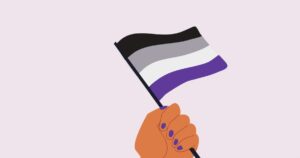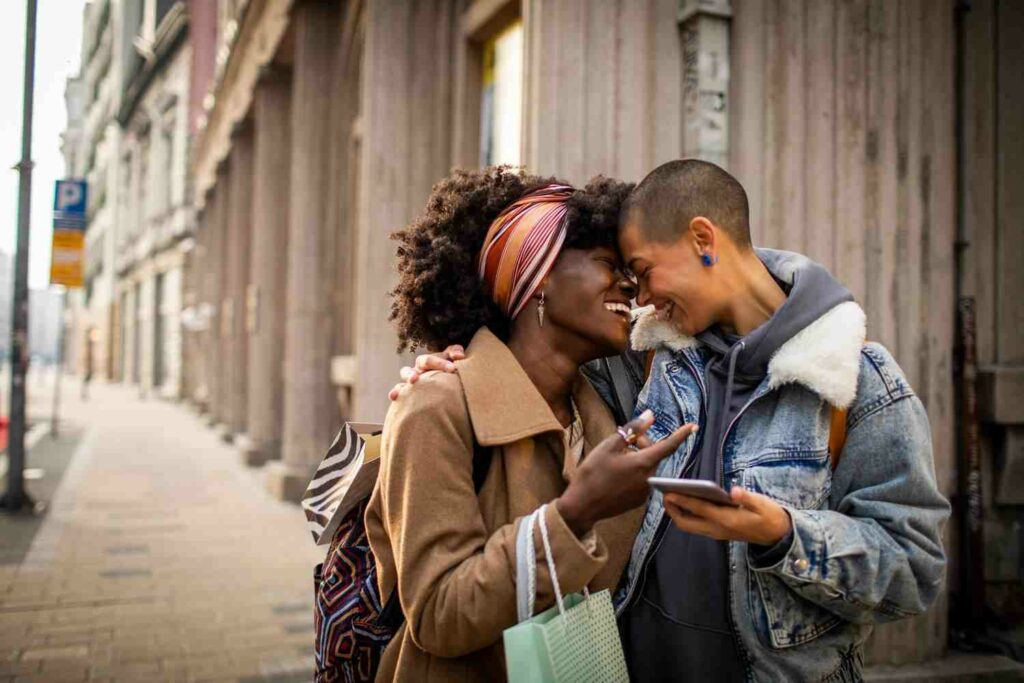This blog aims to shine a light on two orientations often misunderstood or overlooked – Asexuality and Demisexuality. We’ll embark on a journey that dives deep into these identities, revealing their nuances, debunking myths, and creating a dialogue for those who identify within these spaces, and for those looking to understand them better.
Contents
What Are Asexuality And Demisexuality?
 Asexuality refers to a sexual orientation where an individual does not experience sexual attraction toward others. It’s important to understand that this is different from choosing not to engage in sexual activities. Such as celibacy or abstinence. Asexuality is an intrinsic part of a person’s identity. However, it’s also part of a broader spectrum.
Asexuality refers to a sexual orientation where an individual does not experience sexual attraction toward others. It’s important to understand that this is different from choosing not to engage in sexual activities. Such as celibacy or abstinence. Asexuality is an intrinsic part of a person’s identity. However, it’s also part of a broader spectrum.
Some people who identify as asexual may experience romantic attraction. And they may identify as homoromantic, heteroromantic, biromantic, or aromantic. This is depending on who they’re romantically attracted to.
On the other hand, Demisexuality is a sexual orientation on the asexual spectrum where a person does not experience sexual attraction until they have formed a strong emotional connection with someone. It’s not about the length of time knowing someone or the intensity of the relationship. Rather the level and depth of the emotional bond. Like asexuality, demisexuality is not a choice. But an inherent part of an individual’s identity.
Common Misconceptions About Asexuality And Demisexuality
While awareness about various sexual orientations is increasing, there still exist numerous misconceptions about asexuality and demisexuality. Here are some of the most common ones:
Asexuality Misconceptions
- Asexuality is the same as celibacy: This is untrue. Celibacy is a choice to abstain from sexual activity, while asexuality is an inherent sexual orientation where an individual does not experience sexual attraction. Asexual people can and do have sex for various reasons, including to please a partner or to have children.
- These individuals are simply late bloomers: This is a harmful assumption. Asexuality isn’t about being ‘late’ to develop sexual attractions; it is a valid sexual orientation on its own. Like any other sexual orientation, it’s not something that changes as a person matures.
- And, asexuals can’t form loving relationships: Asexual individuals can and often do have deep, romantic relationships. The absence of sexual attraction does not equate to the absence of love or emotional intimacy.
Demisexuality Misconceptions
- Everyone is demisexual because people need emotional connection for sexual attraction: This is a broad generalization. While many people value emotional connections, they don’t necessarily require one to experience sexual attraction.
- Demisexuality is just being choosy or having high standards: This misunderstanding dismisses demisexuality as a valid orientation. It’s not about standards or pickiness. Rather a lack of sexual attraction without an emotional connection.
- It is a phase or a result of trauma: This misconception can be quite harmful. Demisexuality, like other sexual orientations, is not typically influenced by past events or temporary feelings. It’s an intrinsic aspect of a person’s identity.
It’s important to counteract these misconceptions to foster a greater understanding and acceptance of asexual and demisexual individuals in our society.
What Makes Demisexuality Different From Asexuality?
 Demisexuality and asexuality are both orientations on the asexual spectrum. But they differ in the nature of sexual attraction experienced by individuals identifying with these orientations.
Demisexuality and asexuality are both orientations on the asexual spectrum. But they differ in the nature of sexual attraction experienced by individuals identifying with these orientations.
Asexual individuals do not experience sexual attraction toward others. This lack of sexual attraction is consistent, regardless of who the other person is or what kind of relationship they share. On the other hand, demisexual individuals do experience sexual attraction, but only after forming a strong emotional bond with the person.
The key differentiator here is the presence of a deep emotional connection. That is a prerequisite for any sexual attraction to occur for demisexuals. It’s not about the length of the relationship or physical attraction. But only about the level of emotional intimacy and connection.
Can You Be Demisexual And Asexual?
Yes, it is possible for someone to identify as both demisexual and asexual, depending on how they personally experience and understand their own sexuality. While the definitions of these orientations have core commonalities, they can be experienced in a spectrum. And the individual’s experience can fluctuate over time.
An individual might identify as asexual if they generally do not experience sexual attraction. But if they find that they do experience sexual attraction after forming a deep emotional bond with someone, they may also identify as demisexual. The key is to remember that these identities are self-determined and are meant to help individuals understand and communicate their experiences of sexual attraction.
Furthermore, it’s important to note that labels such as asexuality and demisexuality are tools that can help individuals express and understand their experiences. Some people might find that one label fits them perfectly. While others might use multiple labels, and some might prefer none at all. The priority should always be individual comfort and understanding of one’s self-identification.
Common Challenges Faced By Both Identities
 Asexual and demisexual individuals, like anyone who identifies outside of the heterosexual norm, can face a range of challenges and obstacles. Here are some common challenges faced by these communities:
Asexual and demisexual individuals, like anyone who identifies outside of the heterosexual norm, can face a range of challenges and obstacles. Here are some common challenges faced by these communities:
- Invisibility and Erasure
Many people aren’t aware that asexuality and demisexuality exist. And this lack of visibility can make individuals who identify as such feel unseen and misunderstood.
- Invalidation
People may dismiss asexuality and demisexuality as being ‘just a phase’, the result of trauma, or even a medical problem. This invalidation can be hurtful and can also prevent individuals from understanding and accepting their own identities.
- Lack of Representation
Representation in media is lacking for both asexual and demisexual individuals. The absence of characters who share their orientation can lead to feelings of isolation and exclusion.
- Pressure to Conform
Society often places great emphasis on sexual and romantic relationships. As a result, asexual and demisexual individuals may feel pressured to conform to these norms. That can lead to internalized feelings of inadequacy.
- Difficulty in Relationships
Navigating relationships can be particularly challenging, especially when a partner doesn’t understand or respect the individual’s orientation. This can lead to misunderstandings, lack of satisfaction, and even the end of the relationship.
- Mental Health Struggles
Due to societal pressures, invalidation, and erasure, asexual and demisexual individuals might experience increased levels of stress, anxiety, depression, and other mental health challenges.
Support, understanding, education, and increased visibility can go a long way in addressing these challenges and fostering a more inclusive society.
How to Support Asexual and Demisexual Individuals?
Supporting asexual and demisexual individuals, like supporting anyone of any sexual orientation, involves understanding, acceptance, and respect. Here are some specific ways you can show support:
Educate Yourself
The first step is learning about asexuality and demisexuality, understanding what these orientations mean, and recognizing them as valid. Make an effort to learn about the common challenges these communities face. And the diversity within these orientations.
Respect Their Identity
Respect their self-identification and don’t attempt to convince them that they might change or that they haven’t met the right person yet. Asexuality and demisexuality are not phases or decisions; they are integral parts of their identities.
Listen and Empathize
Give them a safe and non-judgmental space to express their feelings and experiences. If they choose to share their experiences with you, listen actively and empathetically.
Challenge Stereotypes and Misconceptions
If you notice others spreading or believing in misconceptions about asexuality or demisexuality, gently correct them and share accurate information.
Be Mindful of Their Comfort
Be considerate in conversations. Don’t pressure them into discussing their sexual orientation if they’re not comfortable doing so. Also, avoid making assumptions about their experiences or feelings based on their orientation.
Support Their Choices
If an asexual or demisexual person chooses to be in a relationship, respect their decision and the boundaries they’ve set in their relationship. If they choose to be single, respect that choice as well.
Encourage Them to Seek Support
 If an asexual or demisexual friend or loved one is struggling, encourage them to seek help from supportive communities, mental health professionals, or trusted individuals.
If an asexual or demisexual friend or loved one is struggling, encourage them to seek help from supportive communities, mental health professionals, or trusted individuals.
Remember, every individual is unique. So what feels supportive to one person may not feel the same to another. Always prioritize open communication and respect their individual needs and boundaries.
Conclusion
As we conclude this exploration, let’s remember that understanding and acceptance are the stepping stones to fostering inclusivity. Let’s continue to educate ourselves and others, challenge misconceptions, and create a world where everyone, irrespective of their sexual orientation, feels seen, understood, and accepted.
This journey isn’t about arriving at a final destination. But about continually learning, growing, and embracing the beauty of our diverse human experiences. Life may sometimes be challenging for asexuals, but Online Asexual Counseling can help. Get experienced LGBTQ therapists at PrideMantra: Book a trial LGBTQ therapy session


